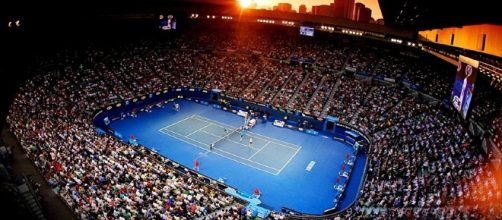Out of the four majors, the Australian Open has always been the most willing to change and experiment. From the transition to the grass courts of #Kooyong to the introduction of Rebound Ace in 1988, the first major of the year has always tried to make the viewing experience more enjoyable for fans. Well this year, tournament organizers decided to make the court surface slightly faster by removing a layer of sand from the hard court surface. In doing so, the Australian public was treated to a 2008 throwback as the Williams’s sisters and federer and Nadal made the finals.
As the tournament ended I began to wonder; why haven’t other tournaments thought of this sooner.
A faster surface does not mean serve and volley
One of the major arguments in favor of slower surfaces has to do with the mundane nature of serve and volley tennis. For those new to tennis, go on YouTube and find a Wimbledon match from 1990’s. I guarantee that the points will only last (at most) 5 shots. It’s hard to become invested in a sport where rallies are hardly athletic. In the mid-2000’s Wimbledon changed the type of grass they used and grass court tennis suddenly was played from the baseline. That made way for players like Rafael Nadal to come to Wimbledon and actually believe that they could win a tournament that was never suited for their game style.
However, the Australian Open did show that if the right precautions are taken, speedy courts do not lead a baseliner exodus. Nadal made the final and Stan Wawrinka made it to semi-finals. By adding a little bit more speed to the court, it encourages more creativity of play and also helps players that like to be aggressive and approach the net. The faster court also made the tournament more exciting with the exit of Novak Djokovic. The Australian Open may have hit lighting in a bottle with the two final match-ups but I guarantee that every major would speed up their court surface if meant a possible Federer victory.
Faster surfaces and help speed up matches
Something that I noticed off the bat was how much shorter five-set matches seem to last at this year’s Australian Open.
Apart from the ridiculous Nadal and Dimitrov semi-final, all of the other five set matches seemed to zoom by. Even the final between Federer and Nadal seemed more dramatic than it actually was. One thing that has always made tennis difficult to watch were the grueling five-set matches that you know took a mammoth effort out of both players. The best example in the 2012 Australian Open between Nadal and Djokovic. They played for almost six grueling hours and by the end of the match had trouble standing up. Faster surfaces will ultimately help the players (particularly the men) by allowing them to win quicker points. Long rallies may be fun to watch on television and as long as the courts do not become lightning quick, those types of exchanges can still happen. The Australian Open seemed to find a great medium and I hope that the other majors follow suit.

